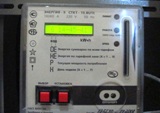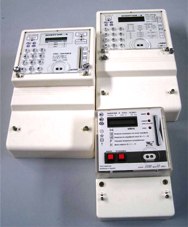Electronic meters in technical accounting systems
 The article provides practical recommendations for creating technical electricity metering systems in an enterprise using modern electronic meters.
The article provides practical recommendations for creating technical electricity metering systems in an enterprise using modern electronic meters.
The problem with buying an electronic electricity meter is like a pulse signal with a large duty cycle: it does not affect the majority of people, and for energy service workers it is a task with many unknowns. For new metering points, the situation is facilitated by the fact that the type of metering device is laid down as a rule in the project for the organization of accounting accounting. But the utility's prescription to replace old induction meters with modern meters is less specific.
Even less specific is the requirement of your manager to set up an accounting system in the enterprise. It can be formulated in a short phrase: "So that it is cheap and everything is controlled." Technical accounting systems are very efficient indeed.They allow you to get objective information about energy consumption, but only with a reasonable approach to creating a system.
After receiving the assignment, energy specialists immediately start looking for suitable measuring devices and ... "drown" in various models, manufacturers and technical characteristics of electronic devices. Therefore, you need to start with a project: for example, determining the number of measurement points. You need to know how to turn on the meter (direct or transformer), three-phase or single-phase load, the presence of interface outputs and a number of other parameters to build an automated data collection system. Once these issues are clear, you can start selecting counters.
Of course, the creation of technical accounting systems can be entrusted to specialized companies, but at the same time, the most difficult part of the work will still have to be done by you: after all, who can better know the specifics of the work of the equipment of the enterprise? And you should be prepared for the fact that the cost of creating a system will double. Management is unlikely to like this.
So, the choice of counter. For technical metering systems, unidirectional (consumption only) meters of active electricity are usually used. The need to consider reactive power consumption is rare. But the situation becomes more complicated if it is necessary to know not only the total amount of energy consumed by objects or installations, but also its dynamics during the day. In such cases, a meter capable of recording the daily load profile is required.
Counters with the ability to register a load profile — these are older models from the series of all manufacturers. They have a wide range of capabilities, including energy metering by active and reactive energy tariff zones. Such meters are much more expensive than low-function ones, so their use must be technically and economically justified.

When creating automated technical accounting, measuring devices are connected through the interface outputs in one system and connected to a computer. With a compact arrangement of technical measuring points (up to 500 meters), meters with a current cycle interface... In more advanced equipment, the system is built on measuring instruments that have access to the RS-485 protocol... In some cases, for communication with remote objects, use GSM modems.
"Mercury" counters of "Incotex", Moscow have a very interesting function... In a number of products there are versions with a built-in PLC-modem for transmitting information over power lines. Instead of entangling the premises of the enterprise with kilometers of signal wires, they allow the transmission of data by wiring to the power engineer's workplace.
But here, too, you need to be careful: if equipment that creates large disturbances in the electrical network is used on the territory, for example, welding lines, microwave installations, arc installations for steel production, then under these conditions there is a risk of data loss. Even the most complex algorithm for encoding information will not be able to withstand powerful impulse noise in the network from such equipment.
And one more wish that is often overlooked when installing meters: the installation must be carried out using a control (measuring) terminal block. Often, during the operation of technical accounting systems, counters with different modifications must be replaced. Or install devices with a more powerful set of functions. In some problem facilities, power network parameter analyzers are sometimes connected to identify the nature of the disturbance and obtain detailed information about the electrical equipment. All this work can be done easily and safely with pads.
The last recommendation concerns software. Almost all manufacturers of measuring instruments offer their own programs for organizing measuring systems. Unfortunately, they are completely incompatible with meters from other manufacturers. Therefore, accounting systems must be built on the same type of measuring instruments. The best option is the "Mercury" counters, for which the programs are supplied free of charge.
